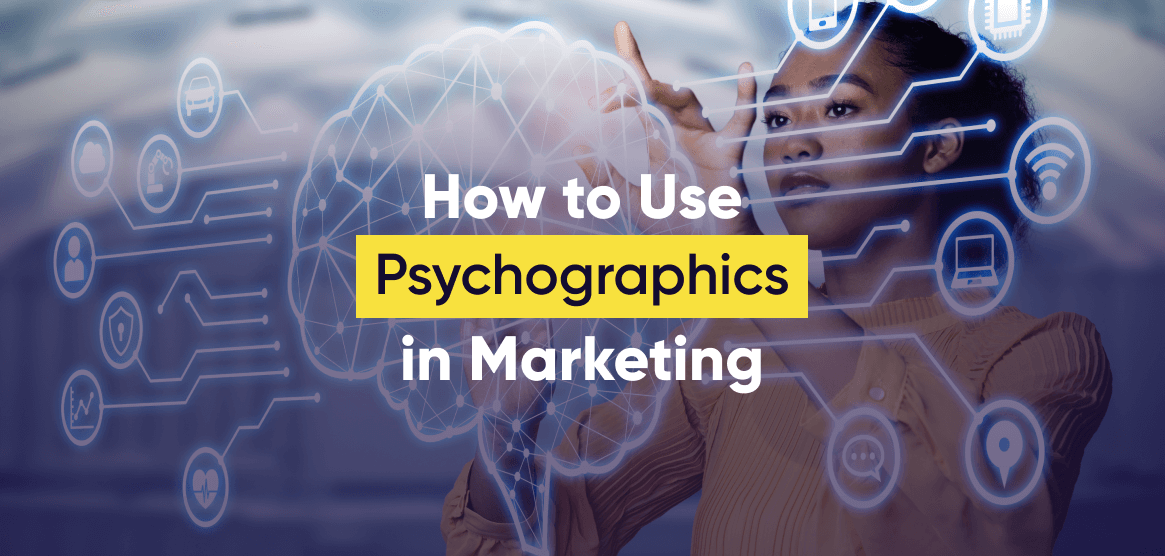A customer’s decision to buy isn’t always logical—it’s often emotional. Think about why someone chooses a certain sneaker brand, a coffee shop, or even a streaming service. More often than not, it’s less about price and more about how the brand resonates with their lifestyle, values, or aspirations. That’s where psychographics comes in. Unlike demographics, which focus on surface-level traits like age or income, psychographics dive deeper into customers’ personalities, interests, and motivations. In this article, we’ll explore what psychographics are, where you see them in everyday marketing, and how big brands are using it.
If you’re curious about what drives customer loyalty beyond psychographics, we have an in-depth report on the latest customer loyalty trends – both from a member’s and brand’s perspective.
What is Psychographics?
Have you ever thought about what is going on in the minds of your customers? Psychographics is a technique to describe and classify traits of humans into certain psychological categories. Psychographics include a person’s personality, aspirations, values, hobbies, attitudes, interests, lifestyle, and more. The term psychographics comes up frequently when conducting market research. These characteristics are extremely important when deciding how to predict customer spending habits and to anticipate which advertisements will be most effective.
Frequently Asked Questions About Psychographics
Q: How are psychographics different from demographics?
Demographics explain who your customer is (age, gender, location), while psychographics explain why they buy (values, interests, lifestyle).
Q: Why should marketers care about psychographics?
Because they unlock deeper personalization. McKinsey found that companies that excel at personalization generate 40% more revenue from those activities than average players.
Q: How do brands collect psychographic data?
Surveys, customer interviews, loyalty program interactions, and analyzing social media behaviors are the most common methods.
Q: Is psychographic segmentation only for large enterprises?
Not at all. Even mid-sized companies can benefit by segmenting customers based on shared values or lifestyle preferences, especially if they run a loyalty program.
How is Psychographics Related to Marketing?
Marketers have always been interested in learning about the demographics of their target audience. However, with the rising emphasis on personalized advertising, it’s more important than ever for companies to understand their audience on a deeper level. The personality, interests, and values of customers are exceedingly important for successful marketing strategies. In order to most effectively sell a product or service there must be a well-rounded understanding of both the psychographics and demographics of the target audience. With this understanding, companies will not only know who bought what, but they will begin to understand why they bought it in order to add meaning to the exchange.
3 Examples of Psychographic Traits and Their Impact on Buyer Behavior
Personality
- Research conducted on personality types and buyer behavior found that extroverts are more open to impulsive purchases of new products. On the other hand, introverts are less likely to be tempted to buy new products.
- Example: If a company selling subscriptions to on-demand television services conducts a survey about their customers and found that they score high on the introversion scale then they should know to keep their website consistent without too many new product offers.
Aspirations
- An effective marketing strategy demonstrates an understanding of the target audience and can generally predict what the customers aspire to be. People decide what products and services to buy based on whether the products can help them achieve their aspirations in life, so it is important to market what could be beneficial for the customers.
- Example: If a jewelry company discovers that most of their target audience is women in their 20s and 30s, then the company should consider focusing on engagement rings in their marketing.
Values
- A new study from lpsos found that customers prefer to buy from brands whose values are aligned with their own, and this preference has been increasing through the years. Therefore, it is helpful for brands to exhibit the values of their company clearly for the customers to relate to.
- Example: If a clothing retailer realizes that much of their target population is passionate about saving the environment, they might consider adopting new environmentally friendly practices and advertise them to show they have similar values as their customers.
What is Psychographic Segmentation?
Psychographic segmentation is when a company breaks down its customers into specific groups based on psychographics or traits that influence their buying decisions, in order to most effectively deliver personalized advertisements. According to Forrester, personalization is “the act of delivering the right message to the right person at the right time in a scalable way across a variety of channels.” Therefore, psychographic segmentation is necessary in order to reach the target audience with personalized information at the right time across various channels.
Can Psychographic Segmentation & Personalization Encourage Customer Loyalty?
Psychographic segmentation can push your personalization strategy to the next level and can productively increase customer loyalty. In today’s digital age it is a necessity to output personalized and tasteful advertisements in order to keep your customers engaged and excited to purchase more products or services.
How to Use Psychographic Segmentation in Practice
One way brands can put psychographics into action is by separating their customers into segments based on characteristics like lifestyle, personality traits, and values. For instance, Coca-Cola realized early on in their marketing development that people within one demographic group have very different psychographic qualities that should not be ignored or forged into one big group. Therefore they adapted their brand to fit into a new modern and busy lifestyle that the new mobile generations are creating by presenting their product as a suitable drink on the go to help them keep up with their busy lifestyle.
The Next Steps for Incorporating Psychographics Into Your Marketing Strategy
Psychographics goes beyond just explaining who the customer is and dives into why they want to buy. Keeping customer motives in mind is an effective way to keep them interested in your brand now and in the future. Most importantly, psychographic segmentation provides a huge opportunity for personalization. When customers receive personalized advertisements and messages, they feel more valued and are more likely to stay loyal to your brand in the future. It is just as important, if not more important, to keep your existing customers happy in addition to bringing in new customers. With personalization based on psychographics, it is possible to keep existing shoppers excited about remaining customers for years to come.
Would you like to learn more about how to use psychographics to your advantage? Our loyalty experts here at Antavo can help. Send us an RFP or book a demo today and our team can help develop a plan.
And don’t forget to download Antavo’s Global Customer Loyalty Report, an in-depth report that showcases current and future industry trends to help you navigate the world of next-gen loyalty programs.

